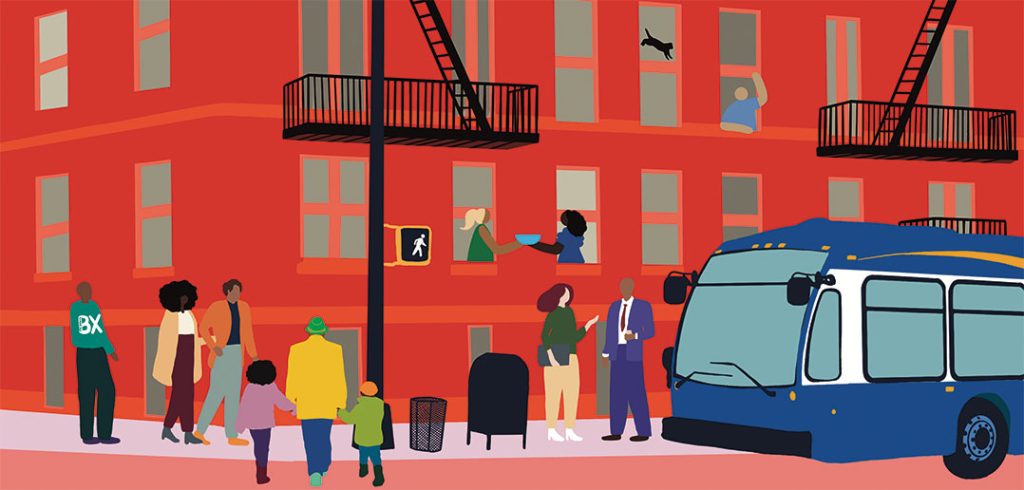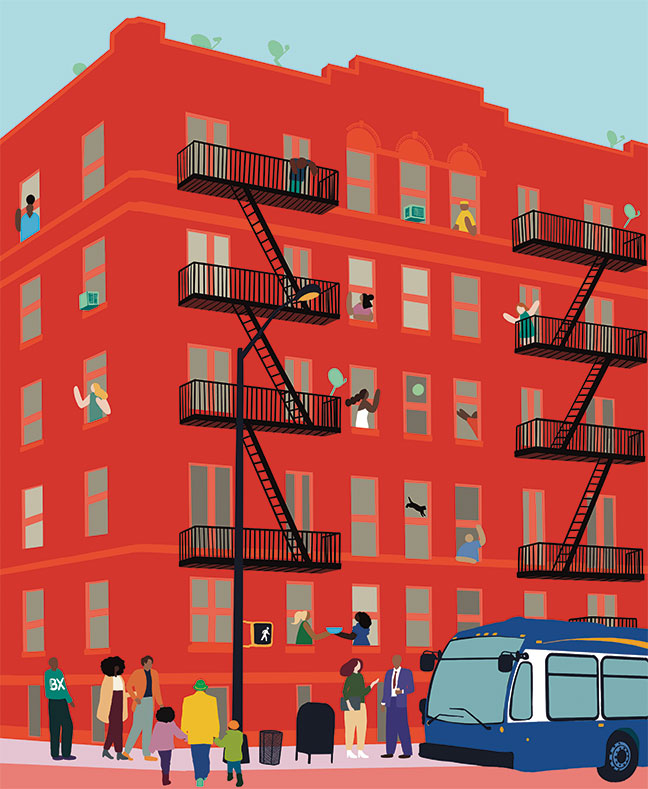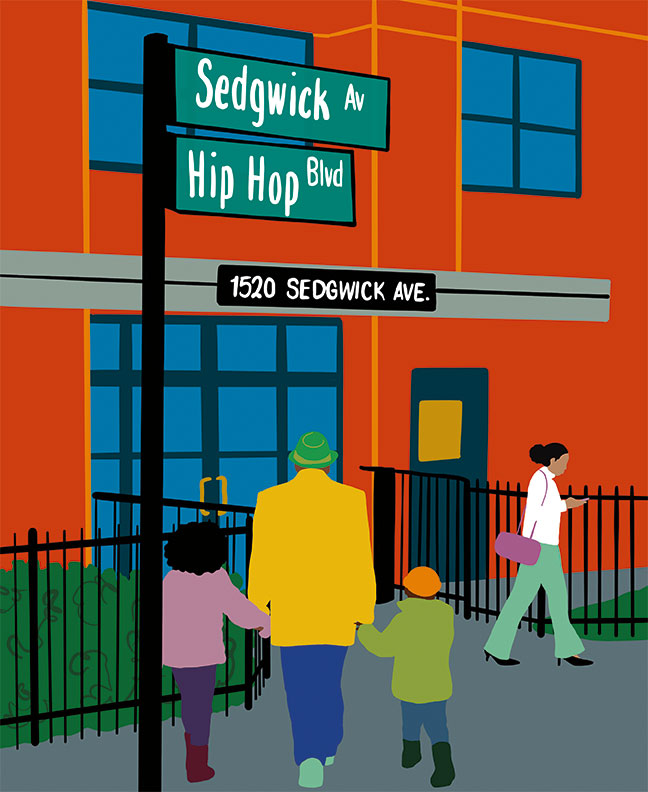Since the 1970s, Fordham students have been studying and contributing to the spirit of innovation and community renewal that has come to define what it means to be a Bronxite.
Fifty years ago, a new art form burst forth on the streets of the Bronx, born from rich musical traditions and a spirit of innovation in neighborhoods of color ravaged by deindustrialization and written off by most of the country. In the ensuing decades, the Fordham community has not only studied and celebrated hip-hop as a revolutionary cultural force but also helped preserve its Bronx legacy—through efforts to recognize the apartment building at 1520 Sedgwick Avenue as the genre’s birthplace, and through oral-history interviews with some of hip-hop’s seminal figures.
“I think the lesson is, let’s explore, interrogate, and embrace the cultural creativity of our surrounding areas because it’s unparalleled,” said Mark Naison, Ph.D., professor of African and African American studies and founding director of Fordham’s Bronx African American History Project.
Naison teaches a popular class, From Rock and Roll to Hip-Hop, that draws on artists like Cardi B, Nas, and Run-DMC to understand the music and its part in U.S. history—and to explore issues he’s spent his career teaching. “I’m not a hip-hop scholar,” he said. “Rather, I’m someone who works to have community voices heard.”
And just as the music has evolved over the past 50 years, so have efforts to revitalize the borough and tell the stories of its residents.
Challenging ‘Deeply Entrenched Stereotypes’
Amplifying community voices is at the heart of the Bronx African American History Project (BAAHP). Fordham launched the project in 2002, at the request of the Bronx County Historical Society, to document and preserve the history of Black people in New York City’s northernmost borough. Naison and his team of Fordham students, faculty, and community historians have spoken with hip-hop pioneers like Pete DJ Jones and Kurtis Blow, but the project is much broader: The archive contains verbatim transcripts of interviews with educators, politicians, social workers, businesspeople, clergy members, athletes, and leaders of community-based organizations who have lived and worked in the Bronx since the 1930s. The archive, which also includes scholarly essays about the Bronx, was digitized in 2015, making the interviews fully accessible to the public.
“Starting by interviewing a small number of people I already knew,” Naison wrote in Before the Fires: An Oral History of African American Life in the Bronx from the 1930s to the 1960s (Fordham University Press, 2016), “I stumbled upon a large, passionate, and knowledgeable group of people who had been waiting for years to tell stories of communities long forgotten, communities whose very history challenged deeply entrenched stereotypes about Black and Latino settlement of the Bronx.”
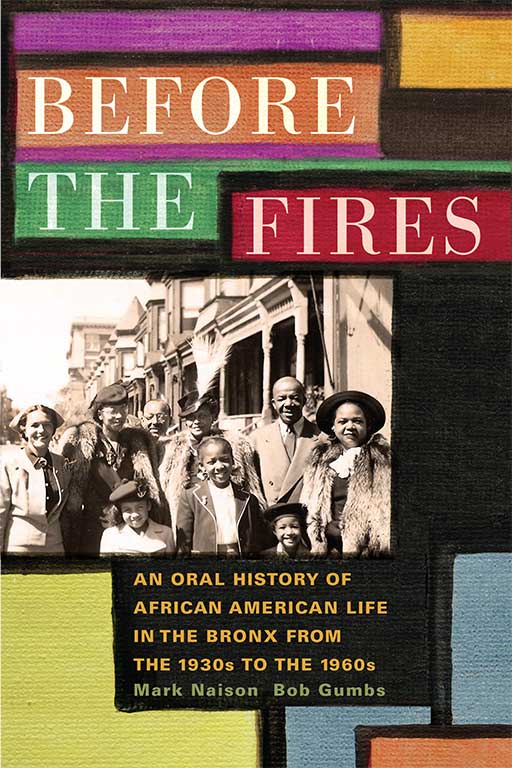 For Naison, the project highlights how the borough, defying the odds, rebuilt neighborhoods following the arson of the 1970s and the crack epidemic of the 1980s. The neighborhoods, with lower crime rates, saw community life flourish again, and in recent decades, the Bronx became a location of choice for new immigrants to New York. BAAHP research includes interviews with Bronxites from Ghana, Nigeria, Mali, Sierra Leone, Guinea, and Burkina Faso, among other nations. It gives voice to growing, diverse immigrant communities that have enlivened Bronx neighborhoods where Jewish, Irish, Italian, Puerto Rican, and Dominican people lived before them. “The Bronx is this site where people mix their cultures and they create something new,” Naison said. “It makes this a lot of fun to study.”
For Naison, the project highlights how the borough, defying the odds, rebuilt neighborhoods following the arson of the 1970s and the crack epidemic of the 1980s. The neighborhoods, with lower crime rates, saw community life flourish again, and in recent decades, the Bronx became a location of choice for new immigrants to New York. BAAHP research includes interviews with Bronxites from Ghana, Nigeria, Mali, Sierra Leone, Guinea, and Burkina Faso, among other nations. It gives voice to growing, diverse immigrant communities that have enlivened Bronx neighborhoods where Jewish, Irish, Italian, Puerto Rican, and Dominican people lived before them. “The Bronx is this site where people mix their cultures and they create something new,” Naison said. “It makes this a lot of fun to study.”
Shaping Global Perceptions
Brian Purnell, Ph.D., FCRH ’00, helped facilitate at least 50 BAAHP interviews from 2004 to 2010, when he was the project’s research director. He said the archive is useful for anyone studying how cities have changed over the decades.
“I hope people use it to think differently about the Bronx, to include the Bronx more deeply and broadly in urban studies in the United States,” said Purnell, now an associate professor of Africana studies and history at Bowdoin College, where he uses the Fordham archive in his own research and in the classroom with his students. “I hope that it also expands how we think about Black people in New York City and in American cities in general from the mid-20th century onward.”
Since 2015, when the BAAHP archives were made available online, the digital recordings have been accessed by thousands of scholars around the world, from Nairobi to Singapore, Paris to Berlin. Peter Schultz Jørgensen, an urbanist and author in Denmark, has been using information from the digital archive to complete a book titled Our Bronx!
“Portraying and documenting everyday life in the Bronx, as it once was, is essential in protecting the people of the Bronx from misrepresentation, while at the same time providing valuable knowledge that can help shape their future,” he said. “Just as BAAHP gathers the web of memory, my book is about the struggles that people and community organizations have waged and are waging in the Bronx. And more important, and encouraging, it talks about how they are now scaling up via the Bronxwide Coalition and their Bronxwide plan for more economic and democratic control of the borough.”
Championing Bronx Renewal
The movement Jørgensen describes is one in which members of the Fordham community have long played key roles, according to historian and journalist Jill Jonnes, author of South Bronx Rising: The Rise, Fall, and Resurrection of an American City. In the mid-1980s, when she published the first edition of the book, Bronxites were just beginning to reverse the toxic effects of long-term disinvestment and arson that had ravaged the borough.
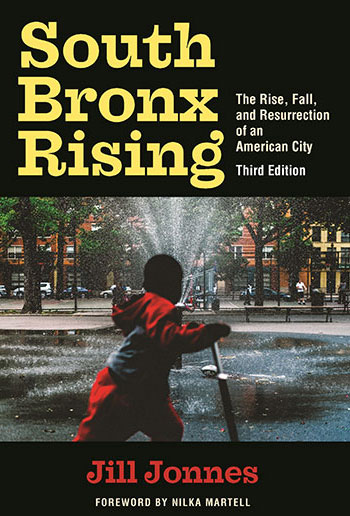 “Today, we far better understand the interplay of blatantly racist government policies and private business decisions … that played a decisive role in almost destroying these neighborhoods,” Jonnes wrote in a preface to the third edition of South Bronx Rising, published last year by Fordham University Press. “Even as fires relentlessly spread across the borough—as landlords extracted what they could from their properties regardless of the human cost—local activists and the social justice Catholics were mobilizing to challenge and upend a system that rewarded destruction rather than investment.”
“Today, we far better understand the interplay of blatantly racist government policies and private business decisions … that played a decisive role in almost destroying these neighborhoods,” Jonnes wrote in a preface to the third edition of South Bronx Rising, published last year by Fordham University Press. “Even as fires relentlessly spread across the borough—as landlords extracted what they could from their properties regardless of the human cost—local activists and the social justice Catholics were mobilizing to challenge and upend a system that rewarded destruction rather than investment.”
One of those Catholics was Paul Brant, S.J., a Jesuit scholastic (and later priest) who arrived at Fordham’s Rose Hill campus in the late 1960s to teach and to pursue graduate studies in philosophy. At the time, faith in the viability of cities was at a low point. Deindustrialization, suburbanization, and two decades of studied underinvestment had taken their predictable toll. The Bronx was experiencing the worst of it, and the people who lived in its neighborhoods were demonized as the cause of the problems.
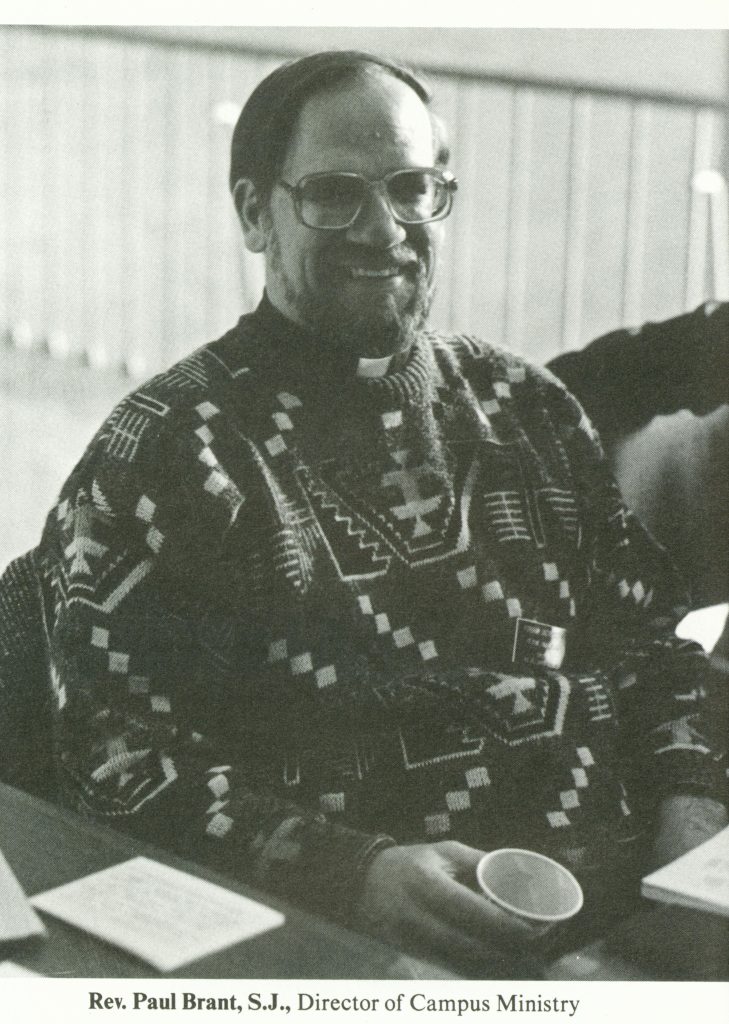
Brant, who died in May 2023 at the age of 82, wanted to understand what could be done. He earned a spot in New York City’s prestigious Urban Fellows program, meant to harness ideas for a city in crisis. Gregarious and forceful, yet able to work diplomatically, he had the backing of Fordham’s president at the time, James Finlay, S.J., to serve as the University’s liaison to the Bronx. With other young Jesuits, he lived in an apartment south of campus, on 187th Street and Marion Avenue, gaining firsthand insight into the scope of neglect and abandonment afflicting the borough.
“Paul felt, well, look, there’s a lot of people still in these neighborhoods. It’s not inevitable that everything gets worse,” said Roger Hayes, GSAS ’95, one of Brant’s former Jesuit seminary classmates. “What are we going to do?”
Long conversations with Hayes and Jim Mitchell, another seminary friend, convinced Brant that solutions to the Bronx’s problems would come by directing the power of the people themselves. In 1972, they formed a neighborhood association in nearby Morris Heights. They used relationships within the parish to confront negligent landlords. Seeing nascent successes there, they moved to launch a larger group.
In 1974, Brant convinced pastors from 10 Catholic parishes to sponsor an organization to fight for the community, and the Northwest Bronx Community and Clergy Coalition (NWBCC) was born. The group expanded to include Protestant and Jewish clergy—membership was always nonsectarian—and went on to train leaders in hundreds of tenant associations and neighborhood groups, including the University Neighborhood Housing Program, which Fordham helped to establish in the early 1980s to create, preserve, and improve affordable housing in the Bronx, and which has been led for many years by Fordham graduate Jim Buckley, FCRH ’76.
All of these groups were knit together across racial lines and around share interests during the worst years of abandonment and destruction. When they learned that rotten apartments had roots beyond individual slumlords, they picketed banks for redlining, the practice of withholding loans to people in neighborhoods considered a poor economic risk. Before long, Bronx homemakers and blue-collar workers were boarding buses to City Hall, demanding meetings with commissioners and testifying at the Federal Deposit Insurance Corporation.
With similar people-power organizations nationwide, they won changes in the nation’s banking laws through the Community Reinvestment Act of 1977, drove reinvestment to cities, and sprouted a new ecosystem of nonprofit affordable housing.
Preserving Hip-Hop’s Bronx Birthplace
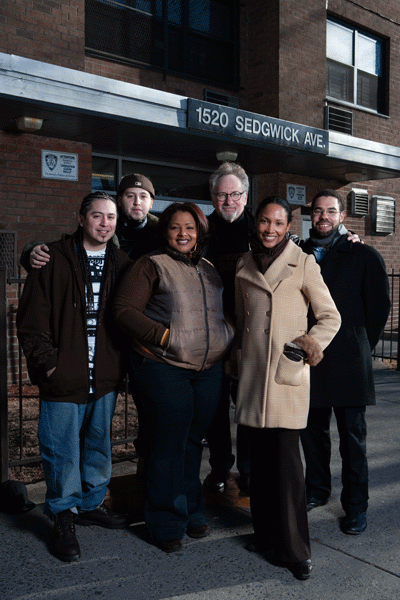
It’s the stuff of legend now: On August 11, 1973, Cindy Campbell threw a “Back to School Jam” in a recreation room at 1520 Sedgwick Avenue, a 100-plus-unit apartment building just blocks from the Cross Bronx Expressway in the Morris Heights neighborhood of the Bronx. Her brother, Kool Herc, DJ’d the party, which came to be considered the origin of hip-hop music.
Fast forward to 2008, when 1520 Sedgwick was laden with debt acquired by Wall Street investors who were failing to maintain the building. Organizers from the Urban Homesteading Assistance Board, a group focused on preserving affordable housing, hoped that documenting 1520’s history would help save it. They asked Fordham professor Mark Naison, Ph.D., to help. His research—which led to a lecture on C-SPAN and was highlighted in an August 2008 appearance on the PBS show History Detectives—helped convince the city government to intervene, eventually preserving the building as a decent and affordable place to live. In 2021, its standing became official: The U.S. Congress adopted a resolution acknowledging 1520 Sedgwick as the birthplace of hip-hop.
Learning About Bronx Renewal
Each year, Fordham’s Center for Community Engaged Learning shares this view of Bronx (and Fordham) history with incoming students, particularly those who participate in its Urban Plunge program in late August. The pre-orientation program gives new students the chance to explore the city’s neighborhoods and join local efforts to foster community development.
“For 30 years, the Plunge experience has offered our students their first introduction to institutions like Part of the Solution and the Northwest Bronx Community and Clergy Coalition, organizations founded by Fordham community members in collaboration with local residents that have built community, advocated for justice, and provided services and resources for the whole person,” said Julie Gafney, Ph.D., Fordham’s assistant vice president for strategic mission initiatives and executive director of the Center for Community Engaged Learning.
Students learn directly from local residents and policy experts about how they can shape policy decisions and build a better future for Fordham and its neighbors. “We really want to introduce first-year students, along with their upper-class mentors, to what’s driving community work in the Bronx right now,” Gafney said. “It’s an ideal ground for fostering a four-year commitment to community solution-building here in the Bronx.”
Reimagining the Cross Bronx
On August 25, nearly 250 first-year Fordham students fanned out across the Bronx as part of Urban Plunge. They served lunch to those in need at POTS—Part of the Solution, where Fordham graduate Jack Marth, FCRH ’86, is the director of programs; they helped refurbish Poe Park and the community-maintained Drew Gardens, adjacent to the Bronx River; and they visited the NWBCCC, now led by Fordham graduate Sandra Lobo, FCRH ’97, GSS ’04.
Students also learned about the Cross Bronx Expressway, a major highway built in the mid-20th century that has been blamed not only for separating Bronx communities but also for worsening air and noise pollution in the borough, contributing to residents’ high rates of asthma and other respiratory diseases.
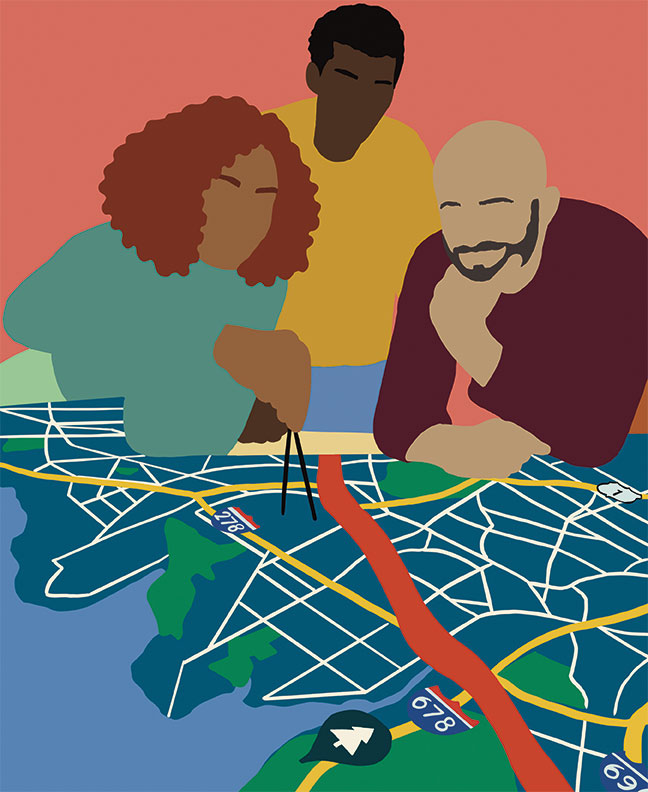 Before visiting parts of the expressway, students heard from Nilka Martell, founding director of Loving the Bronx, a nonprofit that has been leading community efforts to cap the Cross Bronx and develop public green spaces above and around it. A few years ago, Martell connected with Fordham graduate Alex Levine, FCRH ’14, who was pursuing the same goal.
Before visiting parts of the expressway, students heard from Nilka Martell, founding director of Loving the Bronx, a nonprofit that has been leading community efforts to cap the Cross Bronx and develop public green spaces above and around it. A few years ago, Martell connected with Fordham graduate Alex Levine, FCRH ’14, who was pursuing the same goal.
At Fordham, Levine majored in economics and Chinese studies and interned at the Department of City Planning in the Bronx. By 2020, he was a third-year medical student at Albert Einstein College of Medicine, where he co-founded the Bronx One Policy Group, a student advocacy organization focused on capping an approximately 2.5-mile section of the Cross Bronx that runs below street level. The idea is to cover the road with parks and install vents to remove toxic fumes caused by vehicular traffic. They said the cost of the project, estimated to be about $1 billion, would be offset by higher property values and lower health care costs.
“When you think of preventive medicine, it impacts everyone’s life,” Levine told the Bronx Times in 2021. “If we can get a small portion of this capped, then it might be a catalyst to happen on the rest of the highway. This is a project that can save money and lives.”
Martell said Levine’s group connected her with Dr. Peter Muennig, a professor at Columbia University’s Mailman School of Public Health who had published a study on the benefits of capping the Cross Bronx.
“We created this perfect trifecta,” she said. They brought their idea to Rep. Ritchie Torres, and in December 2022, the city received a $2 million grant from the U.S. Department of Transportation to study how to reimagine the Cross Bronx. Fordham’s Center for Community Engaged Learning later received a $25,000 grant from the New York City Department of Transportation as one of only 10 community partners selected to help the department gather input from residents who live near the expressway.
The feasibility-study funding is just a first step, Martell told students during an Urban Plunge panel discussion that featured a representative of the city planning department’s Bronx office and an asthma program manager from the city’s Department of Health and Mental Hygiene. “This isn’t easy,” Martell said. “If this was easy and there was a point-by-point playbook on how to get it done, all these projects would happen.”
But recent Bronx history gives her ample reason to press on. “You know, 40 years ago, we had the restoration of the Bronx River. Fifty years ago, we had the creation of hip-hop.” When there was little support and “no other outlet,” she said, “Bronxites came together to create an outlet.”
“For me, this is what it’s like to be a Bronxite; this is what it’s like to be in the Bronx—to have this kind of energy and these organizing skills to get things done.”
—Eileen Markey, FCRH ’98, teaches journalism at Lehman College and is working on a book about the people’s movement that helped rebuild the Bronx in the 1970s and ’80s. Taylor Ha is a senior writer and videographer in the president’s office and the marketing and communications division at Fordham.

